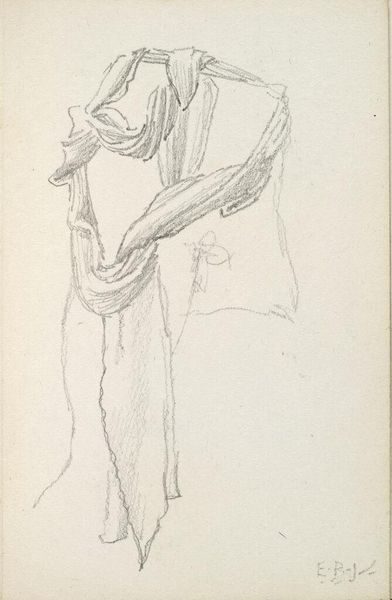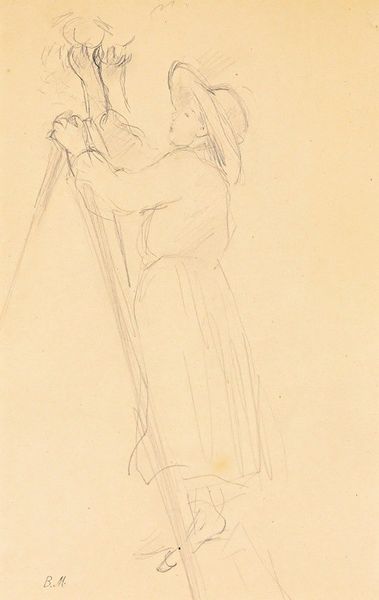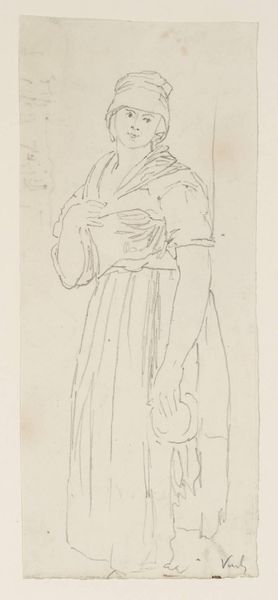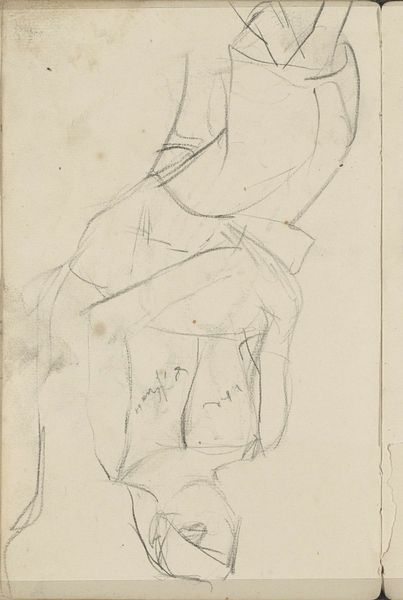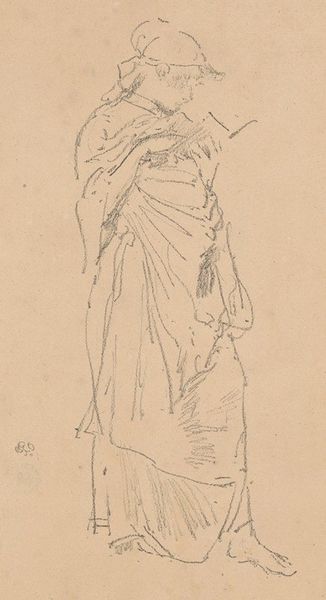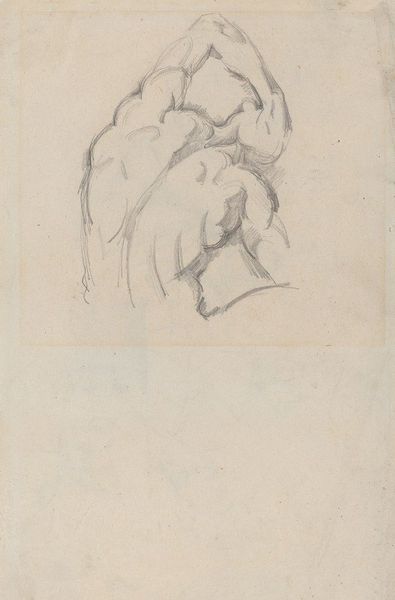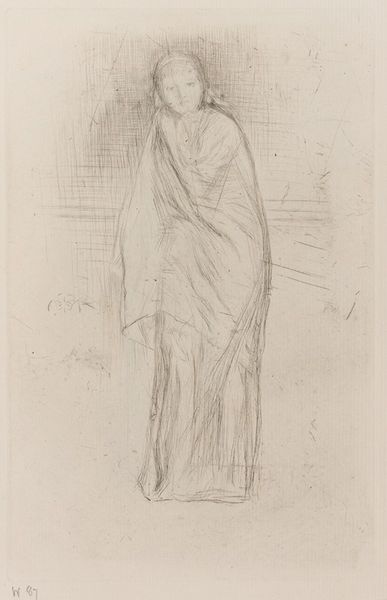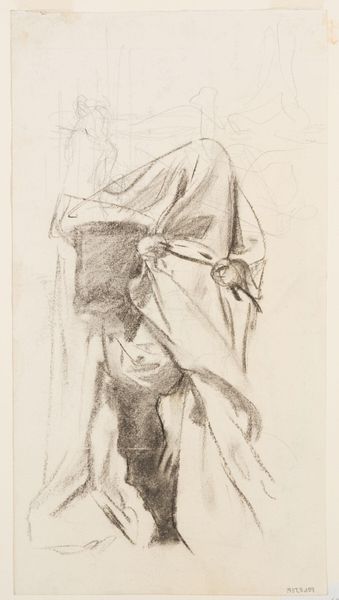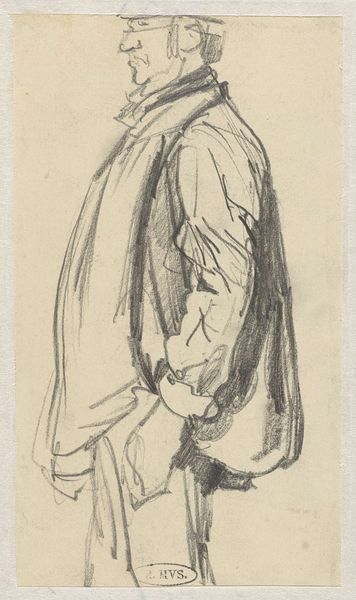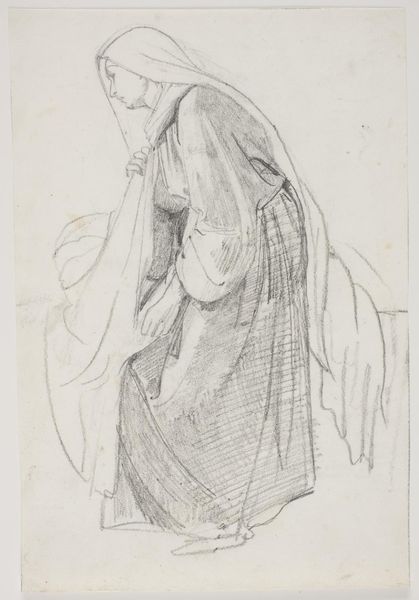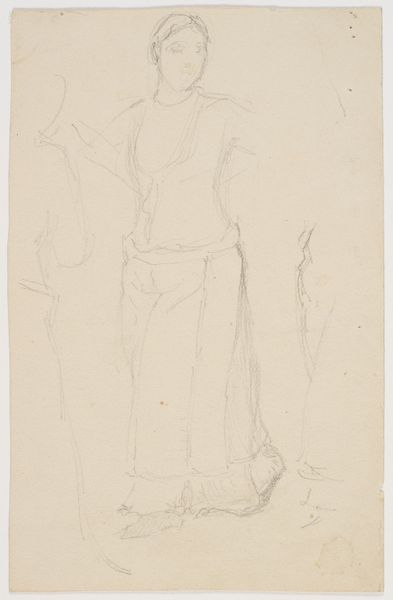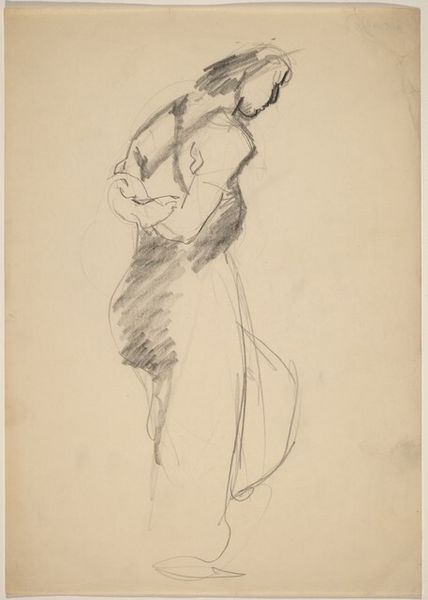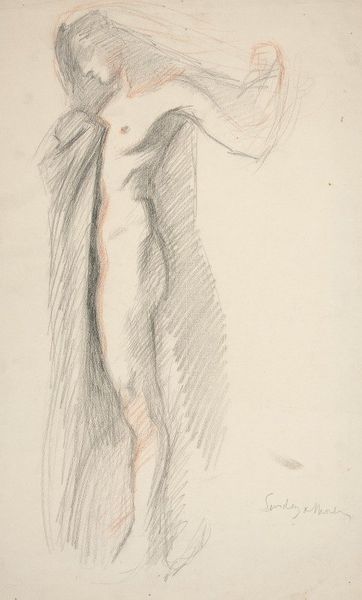
drawing, pencil
#
portrait
#
drawing
#
pencil sketch
#
figuration
#
pencil drawing
#
pencil
#
portrait drawing
#
pencil work
#
academic-art
#
nude
#
realism
Copyright: Public Domain: Artvee
Editor: This is "Sketches of a Boy's Figure for the Painting 'At the Spring'," a pencil drawing by Henryk Siemiradzki, dating from around 1880 to 1885. It's a preparatory sketch, quite delicate. What symbolism do you find embedded within its lines? Curator: This image immediately evokes Arcadia, that pastoral ideal. Even in sketch form, we see a carefully constructed allegory, alluding to innocence and a harmonious relationship with nature. The boy with the flute, the flowing garment... what do they represent to you? Editor: They feel almost staged, like a memory of a classical world, filtered through an idealized lens. Curator: Precisely. Think about the power of the flute itself. Throughout history, it has represented leisure, contemplation, even seduction. In this context, its sound becomes the voice of an imagined past, a constructed paradise. Consider the strategic incompleteness – does it reveal more than a highly rendered painting might? Editor: The incompleteness gives it an air of ethereality; it invites the viewer to co-create the image in their own mind. So it becomes personal as well as historical? Curator: It certainly does. Siemiradzki invites us to partake in a shared cultural memory, reimagining and idealizing a lost world. It is less a true likeness, more a dream of youth, beauty, and simpler times. It taps into that deep human desire for a golden age. Do you sense that nostalgia? Editor: Yes, absolutely. It makes me consider the ways artists use the past to comment on their present. Curator: And how potent visual shorthand can be in shaping our understanding of history and its enduring myths. Editor: It’s amazing how much cultural meaning can be packed into a simple pencil sketch! Curator: Indeed. Even preparatory works can reveal so much about the artist's intentions and the enduring power of symbolic language.
Comments
No comments
Be the first to comment and join the conversation on the ultimate creative platform.
